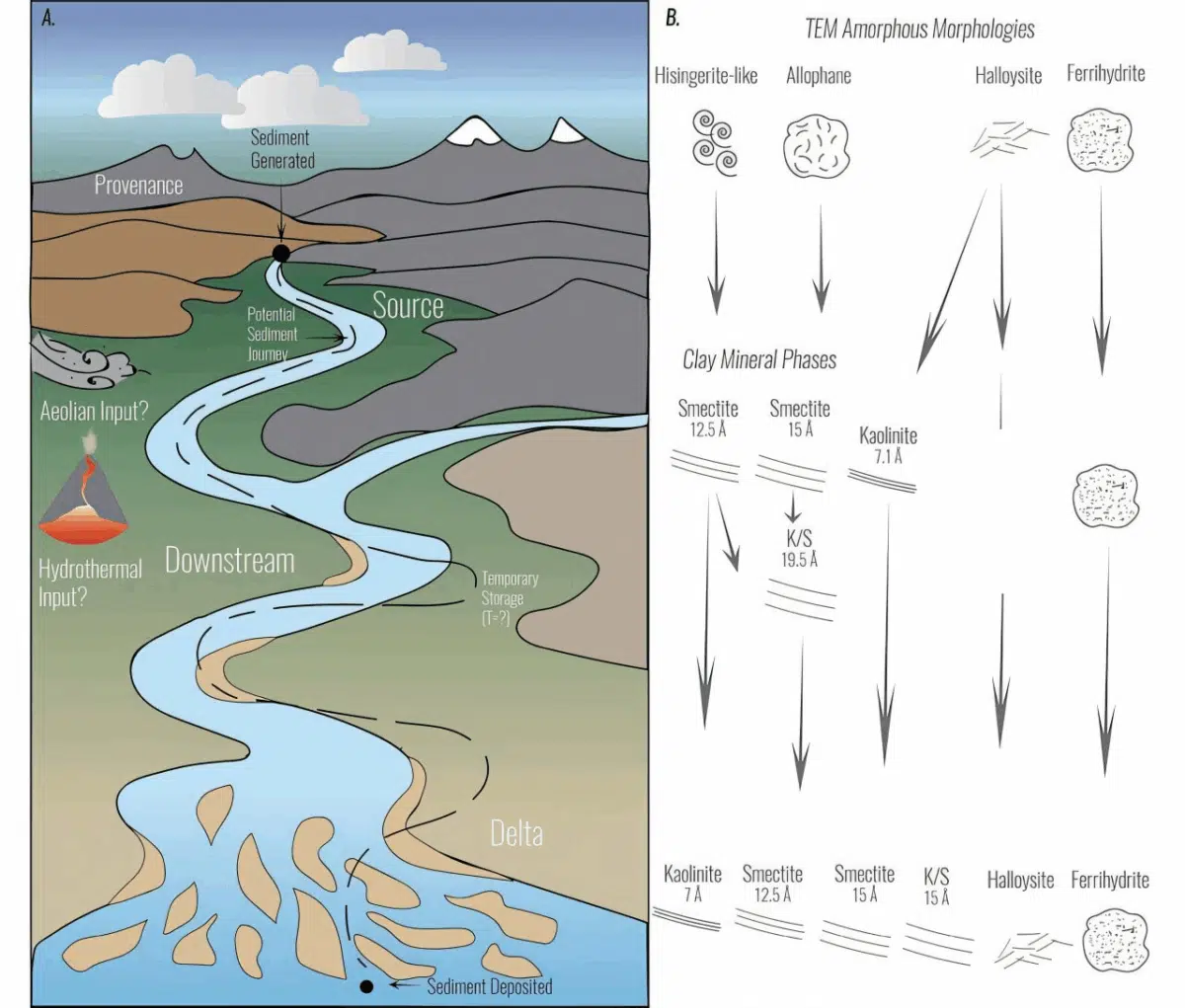In preparation for analyzing Mars samples, scientists are turning to a surprising source: Iceland’s mudrocks. These rocks, formed from volcanic basalt, share mineral similarities with Martian sediments, making them a perfect analog for Mars’ geological history. By studying them, researchers hope to unlock the mysteries of ancient Martian environments. Published in American Mineralogist, the study explores the role of Earth’s volcanic regions in understanding Mars.
Icelandic Mudrocks: A Window into Mars’ Ancient Past
Icelandic mudrocks, formed in volcanic regions, are increasingly recognized for their potential to reveal the geological history of Mars. These rocks, still in a “juvenile” phase, hold key minerals that are crucial for understanding the processes that shaped the Martian surface. Scientists are particularly interested in how these minerals behave when exposed to water—a central element in the search for past life on Mars.
“On Mars, we are exploring minerals that preserve a signature of ancient water but have also been buried and compressed into a rock over time,” said Michael Thorpe, a research scientist at the University of Maryland and NASA’s Goddard Space Flight Center. “On the flip side, on Earth in Iceland, we are uncovering very young sediments that have similar minerals but haven’t gone through that rock-forming process yet.”
These mudrocks in Iceland provide scientists with an invaluable opportunity to observe minerals that may have existed on Mars billions of years ago, before the planet’s water disappeared. The rocks are still in the early stages of sedimentary transformation, offering a unique glimpse into how minerals could evolve over time under similar Martian conditions.
Understanding the processes behind these “juvenile” minerals could help answer critical questions about Mars’ past climate and whether it was once capable of supporting life.
“What happened on Mars to allow these, what we would call ‘juvenile,’ mineral phases to last in the sedimentary rock record?” asked Thorpe. “Did it happen when the planet lost its water? Was it just because it was really cold like Iceland? Or are there other factors at play here?”
Unlocking Mars’ Geological History with Earth’s Young Rocks
The idea of using Earth’s mudrocks as analogs for Mars isn’t just about comparing minerals—it’s about understanding the entire geological context. Iceland’s mudrocks have yet to undergo significant geological transformations, meaning they are more reflective of Martian sediments before the planet’s surface underwent drastic changes. The minerals in these rocks, while still in a youthful state, could reveal clues about Mars’ early environmental conditions.
“As we’re preparing for these precious samples to make their journey from Mars, it’s becoming clear that we need to find cutting-edge techniques to give us a better understanding of what to expect when they arrive in our labs on Earth,” said Thorpe.
Scientists are especially interested in understanding the weathering processes that have shaped these minerals. By studying how minerals interact with water in Iceland, they can better predict how similar minerals on Mars might reveal the planet’s history of water and climate. This research is crucial as NASA and other space agencies prepare for the return of Martian samples in future missions. The findings from Icelandic rocks could help ensure that scientists are prepared for the complexities these samples will bring.
The Complex Nature of Tiny Sediment Grains: Insights into Mars Samples
One of the main challenges in studying Icelandic mudrocks—and, by extension, Martian samples—is the complexity of the sediment grains. These grains are often composed of several minerals, each with varying levels of crystallinity and disorder.
“These samples are mixtures of highly crystalline materials, other rocks and minerals that are more highly disordered, and even some materials that are amorphous,” explained Eric Dooryhee, former program manager for NSLS-II’s Hard X-ray Scattering & Spectroscopy program. “The mixture of signals coming from these differently structured materials is difficult to analyze in a qualitative way.”
To solve this problem, scientists have developed advanced techniques to dissect the complex chemical structures within each grain. These methods allow them to identify the individual elements and minerals present in the tiny samples, offering a more detailed picture of their composition.
“We were able to capture the microheterogeneity of these tiny samples, the variation of their chemical structure, right down to trace elements,” said Juergen Thieme, an adjunct professor at Stony Brook University. “This level of detail is critical for understanding not only how these minerals formed but also what they can tell us about Mars’ past environment.”
 This illustration (a) maps the sediment’s journey from source to sink. The accompanying conceptual model (b) demonstrates how amorphous materials are formed throughout the sedimentary system. Credit: Michael Thorpe
This illustration (a) maps the sediment’s journey from source to sink. The accompanying conceptual model (b) demonstrates how amorphous materials are formed throughout the sedimentary system. Credit: Michael Thorpe
The Role of Advanced Techniques in Mars Sample Preparation
As scientists gear up for the return of Martian samples, cutting-edge analytical methods are becoming more essential. The complexity of Mars’ mineral composition means that researchers must be prepared for a wide range of materials, some of which may resemble the disordered minerals found in Earth’s mudrocks.
“These techniques are something we are still trying to perfect, which is why I like this kind of research,” said Dooryhee.
The research collaboration between scientists and facilities like the National Synchrotron Light Source II (NSLS-II) is vital for improving these analytical techniques. The goal is to ensure that when Mars samples finally arrive, scientists will be ready to extract every bit of information from them, no matter how complex.
Understanding how minerals are weathered and transformed over time in Iceland’s volcanic regions can provide a critical foundation for interpreting Martian rocks. As these analytical techniques improve, they will not only enhance our understanding of Mars but also shed light on Earth’s own geological processes.
 These SRX elemental maps use a color ramp to display relative intensity within each sample site analysis, with red indicating more intense elemental concentrations and blue indicating where concentrations are less abundant. Credit: Brookhaven National Laboratory
These SRX elemental maps use a color ramp to display relative intensity within each sample site analysis, with red indicating more intense elemental concentrations and blue indicating where concentrations are less abundant. Credit: Brookhaven National Laboratory
Earth and Mars, Connected Through Rocks
The study of Icelandic mudrocks has opened new doors for understanding Mars’ geological past. By analyzing these Earth-based analogs, scientists are better equipped to interpret the Martian samples that will soon arrive on Earth. As Thorpe noted, “It’s an amazing opportunity” to use these Earth-based minerals to prepare for the complex task of analyzing Martian rocks. The study, published in American Mineralogist, highlights the importance of Earth’s geology in unraveling the mysteries of other planets, showcasing the ever-deepening connection between our planet and Mars.

